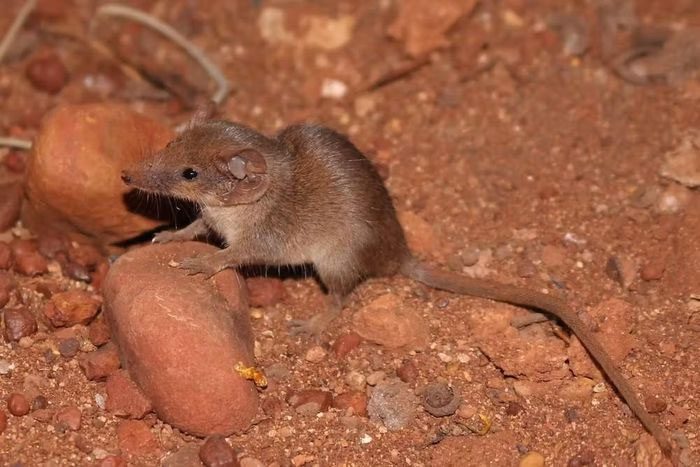Researchers at Queensland University of Technology (QUT) in Australia and the Western Australian Museum recently discovered two new species of marsupials in the Pilbara region of Western Australia.
The two newly discovered species are considered the smallest native mammals in Australia.
One of the new species has been named P. kendricki (Pilbara Planigale “orange-headed”), weighing approximately 7-12 grams and found on land, rocks, and sand.

One of the newly discovered marsupial species in Australia. (Source: The Conversation)
The other species is named after its habitat, Planigale tealei (Pilbara Planigale “cracked clay”), and weighs half as much as the orange-headed Pilbara Planigale.
They belong to the Planigale genus, which is part of the Dasyuridae family (this family includes the Tasmanian devil and several other species of quolls).
Like their “relatives,” these two new Planigale marsupials are tiny mammals resembling mice and are carnivorous.
They may look similar to other species when observed with the naked eye, but they possess distinct characteristics compared to previously discovered species.
Dr. Linette Umbrello, a researcher at QUT working at the Western Australian Museum, stated that researchers collected genetic samples from the ears of these animals for gene analysis and subsequently released them back into their natural habitat.
After comparing the genetic samples with those of other species, Dr. Umbrello and her colleagues found significant DNA differences in this species, suggesting that a specific individual could belong to another species or one that has not been described before.
According to Dr. Umbrello, the genetic sequencing data of the Planigale species indicates the emergence of various evolutionary lineages within the Planigale group.
She believes: “This is truly a ‘species complex’; the organism groups are so morphologically similar that it’s difficult to determine whether they are a single species or multiple different species.”
When a new species is genetically discovered, their morphological characteristics will be studied by scientists.
This assists field scientists in easily distinguishing between species without spending excessive time on genetic sampling.
Dr. Umbrello hopes that scientists will record more of the known Planigale species in the coming years through genetic analysis.
This new discovery helps Australian scientists update the list of five species that have previously been identified across Australia and nearby islands.


















































